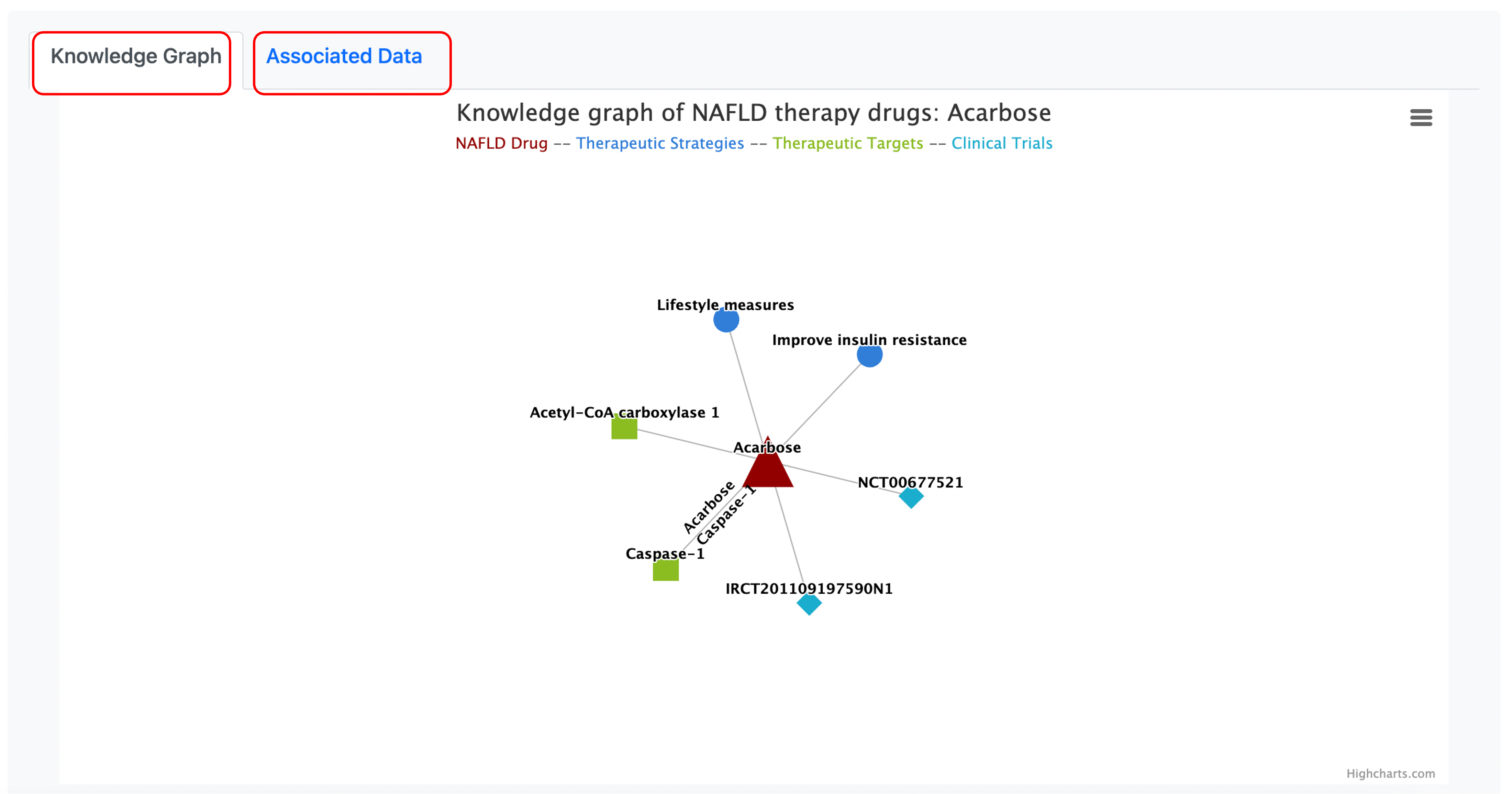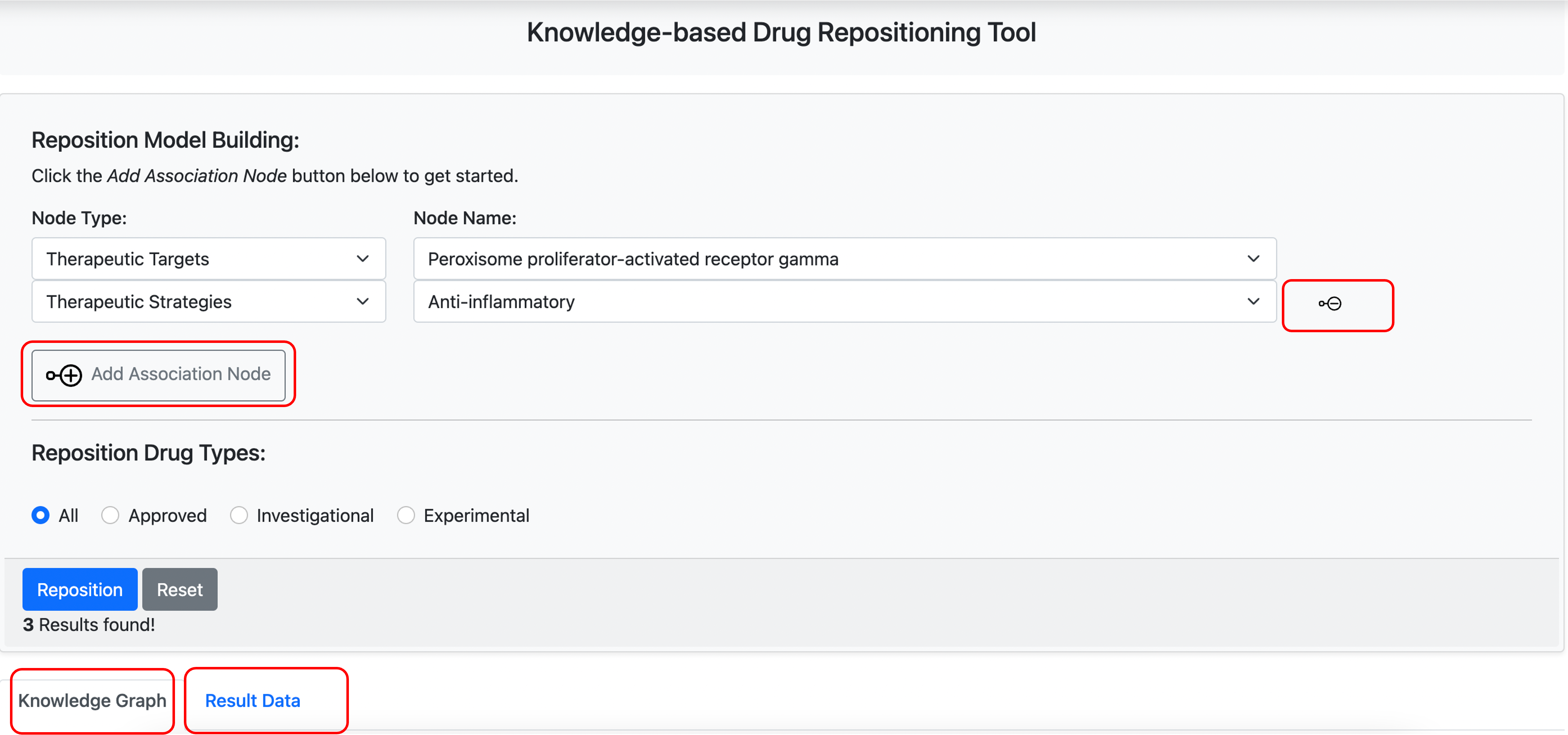Tutorial
1. Search
The search function on the Home Page and navigation bar provides full-text searching of NAFLDkb. All kinds of keywords about NAFLD and NAFLD-related drugs can be used as the search criteria. Users can also click the key words below the search box to run some example search queries.
2. Browse data by category
All data records of NAFLDkb can be browsed by clicking individual entrances below the “Knowledge Base Curation” on the Home Page or the navigation bar for each category. There are filters to help users find and work with a specific subset of the data records according to their own concerns. Data entities and research articles are associated with each other in NAFLDkb with knowledge graphs in Details.


3. Structure search
The Structure Search function on the "Tools" Page provides “Exact”, “Substructure” and “Similarity” chemical structure search of small molecule compounds in each data field. Options can be set when use “Similarity” search, and rough query on large data field may take a while.

4. Druglikeness screening
The Druglikeness Screening function on the "Tools" Page provides a screening tool of bioactive compounds and natural products based on calculated properties. Lipinski Rules of Five parameters and QED(quantitative estimate of drug-likeness)values can be set for customized screening. The screening criteria “Associated NAFLD Targets” refers to the number of therapeutic targets associated with individual bioactive compounds, and the criteria would automatically change to “Associated NAFLD Drugs” when “Natural Products” was selected in the Search Field, which refers to the number of investigational drugs (i.e, herbal medicines) associated with individual natural products.

5. Knowledge-based repositioning
The Knowledge-based Repositioning function on the "Tools" Page provides knowledge-based drug repositioning analysis for NAFLD. Users can click the “Add Association Node” button and “Remove Node” button and set up customized Association Nodes to build a knowledge-based repositioning model. Click “Reposition” button to match the query with repositioning candidates in NAFLDkb, and the result will be provided with knowledge graphs and data tables if hit. Users are encouraged to explore the results by clicking the “Details” button.

6. Case study
The Case Study page shows an application example of drug repositioning using NAFLDkb where 137 novel lead-like compounds and 3 repositioning candidates for NAFLD were newly established.
7. Data download and use
All data of NAFLDkb can be downloaded freely at each data result of browse, search, filter, analysis or by category at the "Downloads" Page, and used as review materials, drug research and development for NAFLD or other related metabolic diseases.
